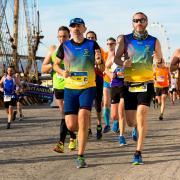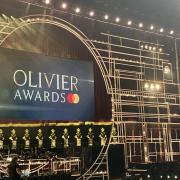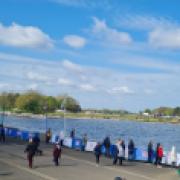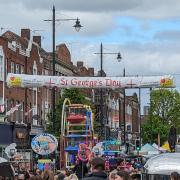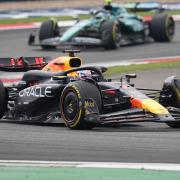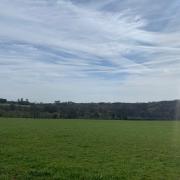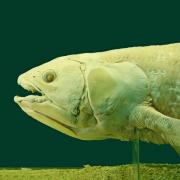
On Tuesday the 12th of february, Monoux held its annual Pride to celebrate everyone who was out of the closet, still in or even questioning. Today, I wanna talk about the Origin of pride that lead us to the pride with have been celebrating since.
For many, pride is a “symbolic representation of LGBT history.” The Origin of pride is said to have start in 1969, where in the law it said homosexuality was legal, many man wear arrested for wearing drag or women who were asserted for wearing less than three feminine clothing which was slowly infurtating the community, but On June 28 1969, the police harrased and tried to arrest parcitpates on Stonewall inn, a friendly bar for those of LGBT, the community didn’t wait for their arrest instead they rioted in hopes of getting the police to back off.
(https://www.bustle.com/articles/166925-the-origins-of-pride-month-what-you-should-know-about-its-history) Due to the stonewall riots, many people decided to fight for their rights, and in 1970, a committee wanted to celebrate the LGBT, but at the time they weren't called that, many suggested gay power before L. Craig Schoonmaker suggested gay pride, In a 2015 interview (https://www.theallusionist.org/transcripts/pride) He said, “People did not have power then; even now, we only have some, but anyone can have pride in themselves and that would make them happier as people and produce the movement likely to produce change.”
This pride turned into a very long annual event, however, they didn’t have the symbolic rainbow flag till 1978, Before that, the community had a pink triangle to symbolise them, but it had been used during Nazi Germany to mark “sexual deviants” in concentration camps, but many people saw it as inappropriate and not hopeful enough. Gilbert Baker created the first rainbow flag for the San Francisco march organised by Harvey Milk, the original flag had eight stripes over the six stripes, we have now. They at first, each colour meant "hot pink for sex, red for life, orange for healing, yellow for sunlight, green for nature, turquoise for art, indigo for harmony and violet for spirit." (https://www.washingtonpost.com/news/wonk/wp/2015/06/29/how-the-rainbow-became-the-symbol-of-gay-pride/?noredirect=on&utm_term=.47711cdd8943) Since the first flag, we have not only the rainbow flag to celebrate pride, but a flag for each sexuality, Both gay and lesbian use the rainbow flag after the lesbian flag was discarded due to the maker being racist, sexist and misogynistic. But we now have the bisexual flag represented by the colours blue, pink and purple and transgender being represented by blue, white and pink etc.
Here are a list of all flags, you might see at pride or just see about~ Gay pride flag The rainbow flag is seen at Pride events all around the world and is often used as a collective symbol for the entire LGBT community.
The original gay pride flag ( Gilbert Baker ) Although the six-stripe flag we are all most familiar with was caused by difficulties in getting pink and turquoise fabric, that doesn’t mean the flag has finished changing.
More colour more pride flag.
In 2017, campaign group More Color More Pride added two extra stripes of black and brown to the traditional flag in order to tangibly include people of colour.
Bisexual flag The bisexual pride flag was designed by Michael Page in 1998 in order to give bisexual people a wider sense of community and visibility as many bisexuals very underrepresented at pride. Page said “that the message of the flag was the idea that the purple blends into both the blue and pink in the same way that bisexual people often blend unnoticed into both gay and straight communities.”
Transgender flag.
The transgender pride flag was created by Monica Helms, a navy veteran who came out as trans in 1987.Helms came up with the trans flag in 1999, after she met Michael Page, and he told her “the trans community needs a flag too.”
The idea for the design came to her quickly, with the blue for trans men, the pink for trans women and the white stripe in the centre representing the non-binary community. it didn’t start gaining popularity until 2013.
Progress flag.
In 2018, a designer began a campaign to “reboot” the Pride flag to make it more inclusive by adding a five-coloured chevron to represent queer people of colour as well as the trans community.
Lesbian flag The flag celebrates the L in the LGBT community with the beautiful hues of pink, though many lesbians opt for other symbols including the interlocking venus symbol, or the rainbow flag.
You might see this flag adapted somewhat, either mixed with other flags or with a bright red kiss in the corner to represent lipstick lesbian. However, the creator of flag was racist, bihopic and misogynistic, she said disgusting things about butches, lipstick lesbians, asian women and bi women and her flag is rarely used or not used at all as the community want nothing to do with the creator.
Intersex flag Intersex means a person who is born with variations in sex characteristics including chromosomes, gonads, sex hormones, or genitals that don’t fit the typical “male” or “female” definitions.
Designed by advocacy group Intersex Human Rights Australia in 2013, the intersex pride flag intentionally stays away from traditionally gendered colours of blue and pink to celebrate the intersex community.
Pansexual flag Many people see pansexuality as either an attraction regardless of gender or an attraction to all genders. The creator of the flag is unknown, but it began to be used on the internet in 2010 and has since become a frequent sight at Pride events all around the world. Pansexual people describe the flag as showing the attraction to men with the blue stripe, women with the pink and people of other genders with the yellow.
many of the flags can be found on this website to help educate yourself on all of the sexualities and pride flags. whether its pride or not, we should recognise the LGBT community and celebrate.
https://www.pinknews.co.uk/2018/06/26/all-of-the-flags-you-might-see-at-pride-and-what-they-mean/



